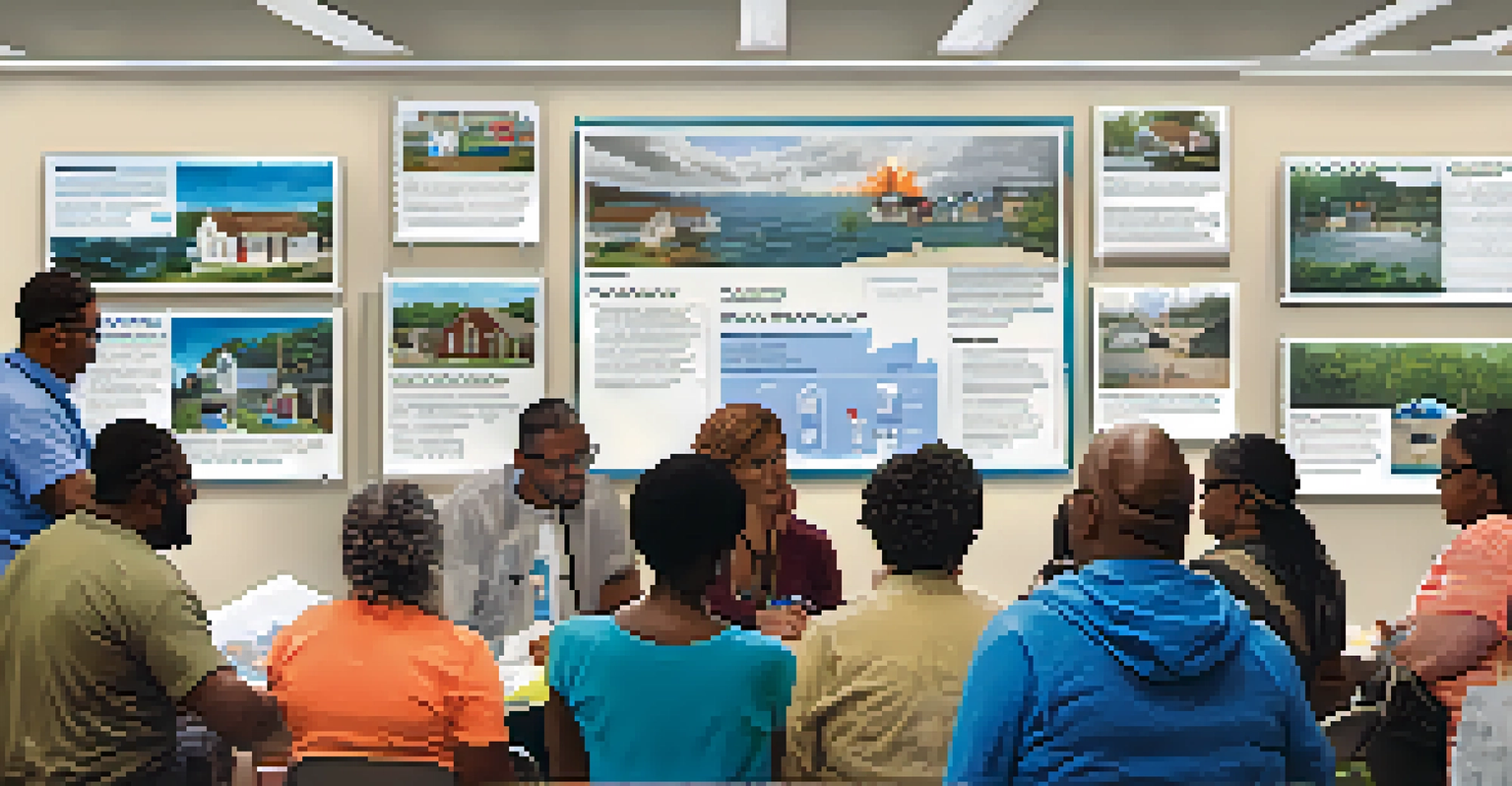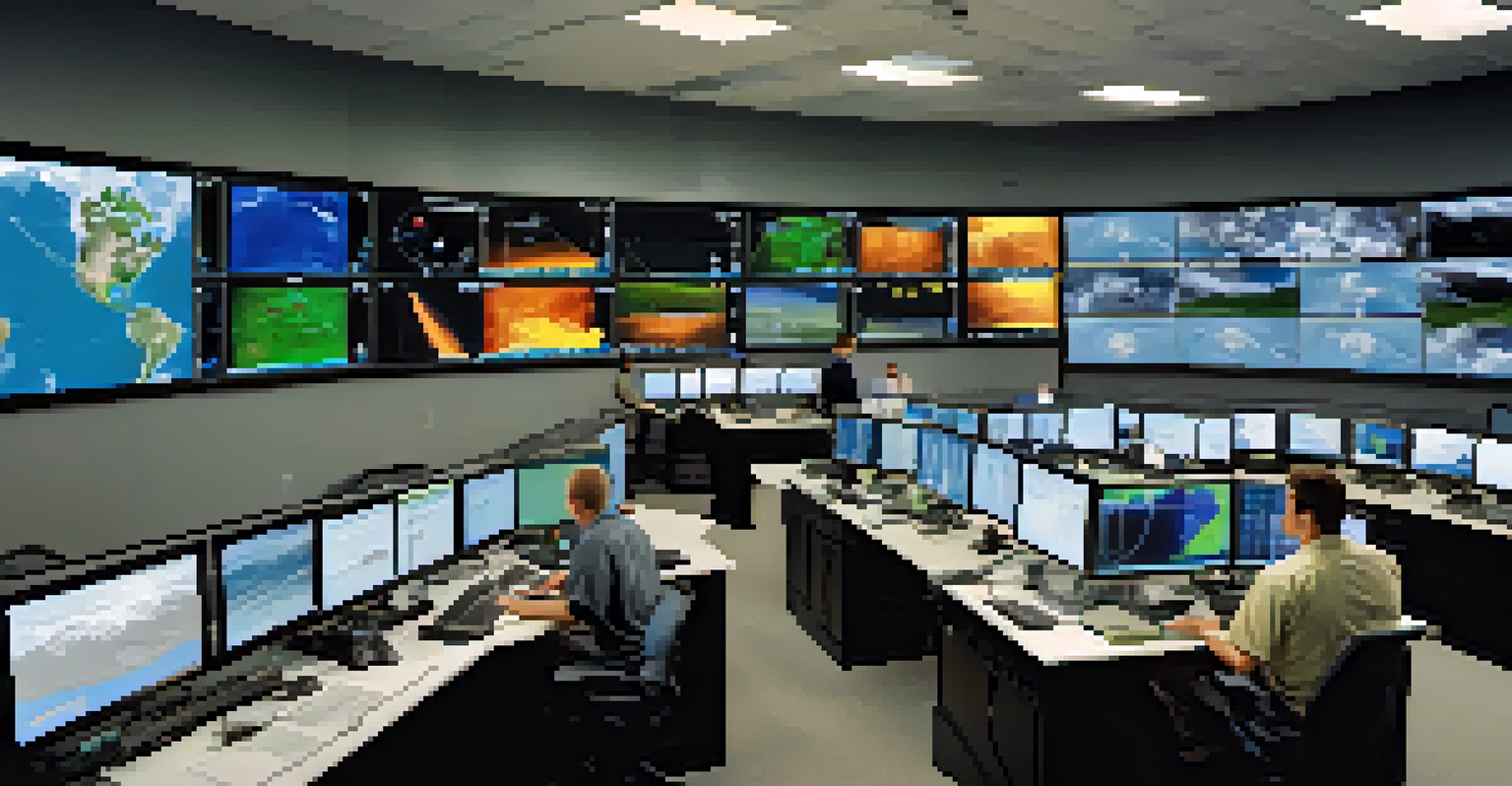Hurricane History: Natural Disasters That Shaped Florida

Understanding Hurricanes: What They Are and How They Form
Hurricanes are powerful storms that form over warm ocean waters, driven by heat and moisture. They consist of a low-pressure center, strong winds, and rain, creating a spiral structure. Understanding their formation helps us grasp the potential impacts these storms can have on coastal areas like Florida.
The only thing we have to fear is fear itself.
The process begins when warm air rises from the ocean surface, creating a vacuum that pulls in more air. As this air spins, it cools and condenses, releasing heat and fueling the storm. This cycle of energy transfer is what allows hurricanes to grow in size and strength, sometimes reaching catastrophic levels.
In Florida, the combination of warm waters and atmospheric conditions makes it a prime target for hurricanes. As we delve deeper into Florida's hurricane history, it becomes clear just how significant these storms have been in shaping the state.
The Great Hurricane of 1926: A Turning Point for Florida
One of the most devastating hurricanes in history struck Florida in 1926, known as the Great Hurricane. This storm caused immense destruction, particularly in Miami, where rapid urbanization had taken place. The aftermath left thousands homeless and marked a turning point in how the state approached hurricane preparedness.

The Great Hurricane revealed vulnerabilities in infrastructure and emergency response systems. As a result, building codes were revised, and the importance of disaster planning became evident. This event not only reshaped the physical landscape but also the mindset of Floridians towards hurricanes.
Hurricanes Shape Florida's Resilience
Historical hurricanes have significantly influenced Florida's approach to disaster preparedness and infrastructure improvements.
In the years following the storm, Florida began to invest more in weather forecasting and emergency services. The lessons learned from this disaster continue to influence hurricane preparedness strategies today, showcasing how historical events can lead to meaningful change.
Hurricane Andrew: A Lesson in Destruction and Resilience
In 1992, Hurricane Andrew made landfall in South Florida, bringing with it winds of up to 165 mph. The destruction was unprecedented, leaving entire neighborhoods flattened and over 250,000 people displaced. This hurricane was a stark reminder of nature's power and the vulnerabilities of urban areas.
In the midst of chaos, there is also opportunity.
The aftermath of Hurricane Andrew prompted significant changes in Florida's building codes, emphasizing the need for hurricane-resistant structures. Residents and officials alike learned the importance of preparedness and community resilience in the face of such disasters. The storm also highlighted the critical role of timely information and effective communication during emergencies.
Today, Hurricane Andrew serves as a case study for disaster management and response. Its legacy is evident in the stronger infrastructure and more organized emergency response systems we see in Florida now, proving that resilience can emerge from the shadows of destruction.
The Impact of Hurricane Katrina on Florida's Response Strategy
Although Hurricane Katrina primarily impacted Louisiana in 2005, its effects were felt across the Gulf Coast, including Florida. The storm exposed significant gaps in emergency management and preparedness, leading to a reevaluation of response strategies. Florida officials recognized the need to enhance their own disaster readiness in light of the lessons learned from this catastrophic event.
Katrina's aftermath highlighted the importance of communication between various agencies and the necessity of a coordinated response to large-scale disasters. This led to improved training for emergency responders and a greater emphasis on community education regarding hurricane preparedness.
Technology Enhances Hurricane Tracking
Advancements in technology have revolutionized hurricane tracking, providing critical information for better preparedness and response.
As a result, Florida implemented comprehensive evacuation plans and increased public awareness campaigns. The changes instituted post-Katrina have undoubtedly saved lives in subsequent storms, showcasing how historical events can lead to improved disaster response strategies.
Hurricane Irma: A Modern Test of Florida's Preparedness
In 2017, Hurricane Irma struck Florida, bringing with it severe winds and flooding that affected millions. As one of the most powerful hurricanes to hit the state in recent years, Irma tested Florida's emergency management systems and infrastructure. Residents faced mandatory evacuations and widespread power outages, leading to a collective effort to respond to the crisis.
The storm prompted a massive mobilization of resources and volunteers, showcasing the strength of community bonds in times of need. Many residents came together to help their neighbors, demonstrating resilience and solidarity in the face of adversity. This community spirit was a silver lining amidst the chaos caused by the hurricane.
Post-Irma, Florida again reassessed its hurricane response strategies, focusing on improving evacuation routes and enhancing communication systems. Each storm teaches valuable lessons, and the response to Irma has contributed to a more robust framework for handling future hurricanes.
The Role of Technology in Modern Hurricane Tracking
Advancements in technology have revolutionized how we track and understand hurricanes. Satellites, radar systems, and computer modeling now allow meteorologists to predict storm paths and intensities with increasing accuracy. This technology provides critical information to residents and emergency services, enabling better preparedness and response.
Real-time data allows for timely evacuations and resource allocation, which can save lives. For instance, technology has improved the National Hurricane Center's ability to issue warnings, giving people more time to prepare for impending storms. This has become an essential tool in Florida's ongoing battle against hurricanes.
Community Bonds Strengthen Preparedness
Community resilience and local initiatives play a crucial role in ensuring residents are prepared for hurricane season.
Moreover, social media platforms have become vital for disseminating information quickly and effectively. Residents can access updates from trusted sources, share their experiences, and coordinate assistance. The integration of technology into hurricane preparedness has fundamentally changed how Floridians interact with these natural disasters.
Community Resilience: Preparing for the Next Hurricane Season
As hurricane season approaches each year, Florida communities focus on preparedness and resilience. Local governments hold workshops and drills, educating residents on evacuation plans, emergency kits, and safety protocols. Building a culture of preparedness ensures that individuals and families know how to respond when a storm approaches.
Community organizations play a significant role in fostering resilience by providing resources and support. Initiatives such as neighborhood preparedness groups and local shelters create a safety net for residents during emergencies. These efforts help to build stronger, more connected communities that can withstand the impact of hurricanes.

Ultimately, the collective experience of past hurricanes shapes Florida's future. By learning from historical events and actively preparing for the next storm, Floridians can face hurricane season with confidence, knowing they are equipped to navigate whatever challenges may come their way.